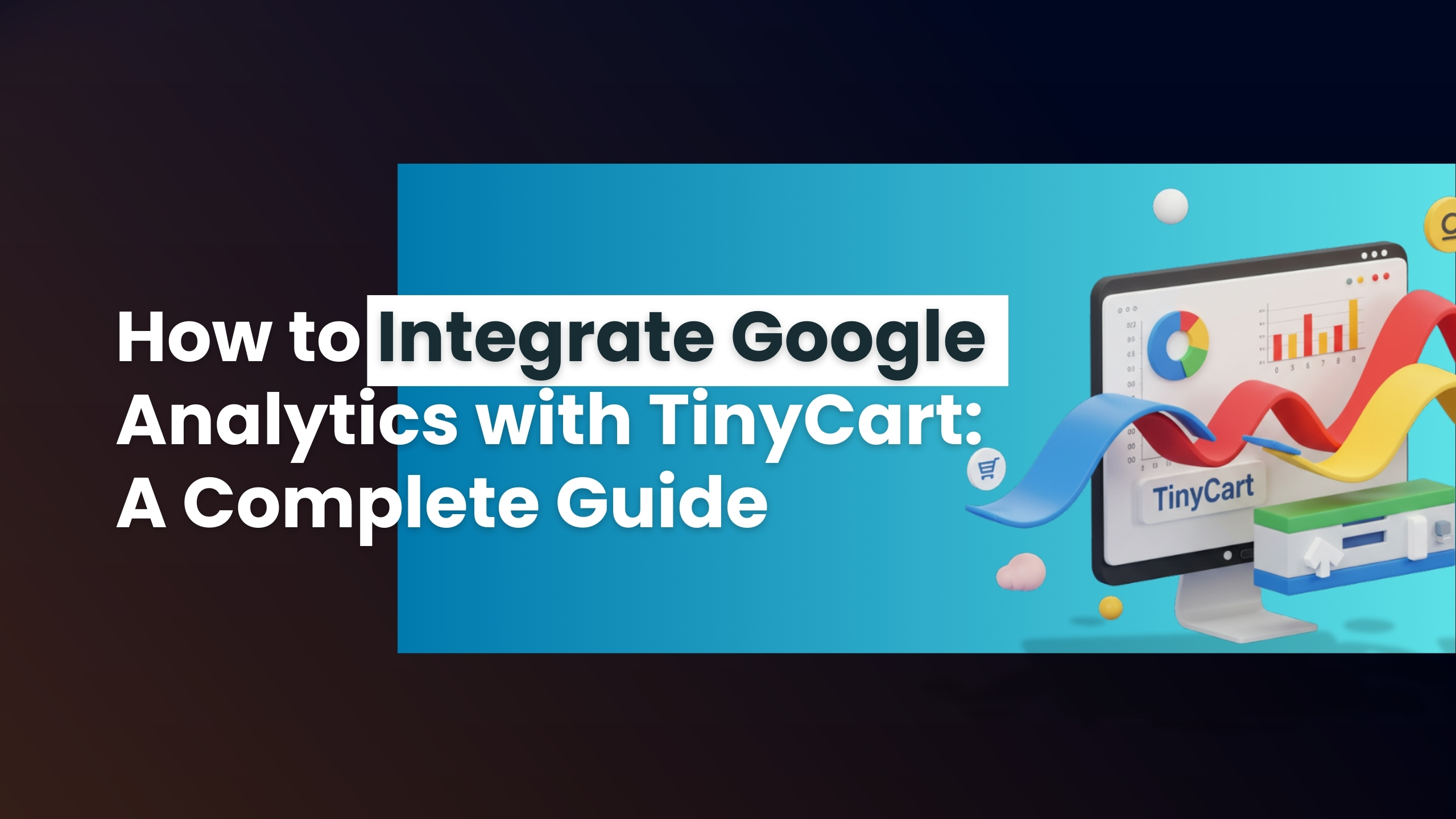How to Integrate Google Analytics with TinyCart: A Complete Guide
Understanding your website’s performance is key to making informed decisions and driving growth. Google Analytics is a powerful tool that provides deep insights into visitor behavior, conversion rates, and overall store performance. Integrating Google Analytics with your TinyCart store allows you to gather actionable data that can optimize your e-commerce operations. This guide walks you through each step of the integration process, enriched with interactive multimedia, local insights, and a detailed troubleshooting checklist to ensure a seamless setup.
- Preparing for Integration
a. Create Your Google Analytics Account
a. Sign Up:
If you don’t have one, sign up for a free Google Analytics account at analytics.google.com.
b. Set Up a Property:
Create a new property for your TinyCart store, entering your website details as prompted.
c. Obtain Your Tracking Code:
Copy the tracking code (or measurement ID for GA4) provided by Google Analytics.
Local Insight:
Australian e-commerce sites that accurately implement tracking see up to 20% improvement in data accuracy and decision-making.
Actionable Tip:
Record your tracking ID for future reference and testing.
- Integrating Google Analytics with TinyCart
a. Access Your TinyCart Admin Panel
Log into your TinyCart dashboard and navigate to the settings section where you can modify your site’s code or add custom scripts.
b. Embed the Tracking Code
Theme Editor:
Open your theme editor (usually in header.php or footer.php) and paste the Google Analytics tracking code just before the closing tag.
Save and Publish:
Save your changes and publish the updated theme.
Actionable Tip:
Immediately verify data collection using Google Analytics’ real-time reports or Google Tag Assistant.
- Configuring Google Analytics for E-commerce
a. Enable E-commerce Tracking
Admin Settings:
In Google Analytics, go to the Admin section, select your property, and enable “E-commerce” and “Enhanced E-commerce Reporting.”
Configure Goals:
Set up goals to track key conversions such as completed purchases, sign-ups, or product views.
Actionable Tip:
Define clear goals based on your business objectives and review them monthly to ensure they remain aligned with your growth strategy.
- Troubleshooting Common Issues
a. Expanded Troubleshooting Checklist
i. Data Collection Issues:
Verify that the tracking code is correctly placed.
Clear your browser cache and retest.
ii. API or Connection Errors:
Confirm that your hosting environment meets all system requirements.
Use tools like cURL to test server connectivity.
iii. Data Mismatch:
Ensure your product feed and tracking parameters are correctly configured.
Check for duplicate tracking codes.
iv. Delayed Updates:
Allow time for changes to propagate, but monitor scheduled syncs for consistency.
Actionable Tip:
Maintain a troubleshooting log documenting issues and resolutions, and use this checklist each time you update your integration.
- Best Practices for Ongoing Monitoring
a. Regular Audits:
Periodically review your Google Analytics reports to monitor traffic, user behavior, and conversion rates.
b. Stay Updated:
Follow updates from Google Analytics and TinyCart for new features and best practices.
c. Integrate with Other Tools:
Consider linking your analytics with Google Ads, CRM systems, or other marketing platforms to get a comprehensive view of performance.
Actionable Tip:
Set up a monthly review schedule to analyze key metrics and adjust your strategy based on data insights.
- Actionable Next Steps and Growth Roadmap
1. Create Your Google Analytics Account:
Register, create a property, and obtain your tracking code.
2. Embed the Tracking Code:
Insert the code into your TinyCart theme using the theme editor.
3. Enable E-commerce Tracking:
Activate E-commerce settings and configure relevant goals.
4.Verify Data Collection:
Us e real-time reports and Google Tag Assistant to ensure tracking is active.
5. Troubleshoot and Optimize:
Use the troubleshooting checklist and flowchart to address any issues.
6. Monitor and Review:
Schedule regular performance audits and adjust your strategy as needed.
Actionable Tip:
Develop a detailed, step-by-step checklist based on these actions to ensure nothing is overlooked.
- Continuous Learning and Resource Hub
a. Webinars & Workshops:
Attend webinars on Google Analytics and e-commerce optimization hosted by platforms like StartupAus or business.gov.au.
b. Online Courses:
Explore courses on Google Analytics via Google Skillshop or Coursera.
c. Resource Links:
Visit the Google Analytics Help Center for in-depth documentation and support.
Call-to-Action:
Register for our upcoming Google Analytics Integration Webinar to learn advanced techniques and engage in live troubleshooting with experts.
Key Takeaways
- Accurate Tracking is Crucial: A correctly integrated Google Analytics setup provides actionable insights that drive growth.
- E-commerce Optimization: Enabling and configuring e-commerce tracking is essential to measure conversions and improve your sales funnel.
- Troubleshooting is a Continuous Process: Regularly review and resolve any issues using a structured troubleshooting checklist.
- Ongoing Monitoring: Stay proactive with regular audits and performance reviews.
- Interactive Resources Enhance Learning: Use multimedia tools, flowcharts, and webinars to deepen your understanding and continuously optimize your integration.
Conclusion
Integrating Google Analytics with your TinyCart store is a powerful strategy to gain actionable insights into your e-commerce performance. By following this comprehensive, step-by-step guide and leveraging interactive tools and best practices, you can ensure that your tracking setup is robust, accurate, and optimized for growth. Embrace continuous learning and proactive monitoring to transform your data into effective growth strategies.
FAQs
- What is the first step in integrating Google Analytics with TinyCart?
Start by creating a Google Analytics account, setting up a property, and obtaining your tracking code. - Where should the tracking code be embedded?
It should be placed in the global header or footer of your TinyCart theme to load on every page. - How do I enable e-commerce tracking in Google Analytics?
In the Admin section, enable both "E-commerce" and "Enhanced E-commerce Reporting" under your property settings. - What should I do if no data is being collected?
Verify the placement of the tracking code, clear your browser cache, and use tools like Google Tag Assistant to diagnose issues. - How often should I review my integration?
Regular monthly reviews are recommended to ensure data accuracy and to incorporate any necessary updates.

